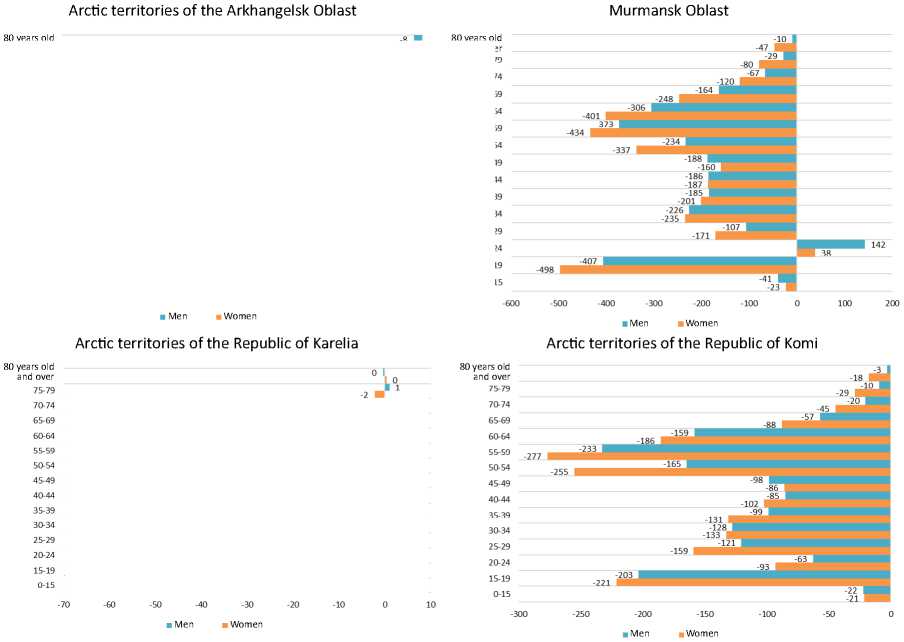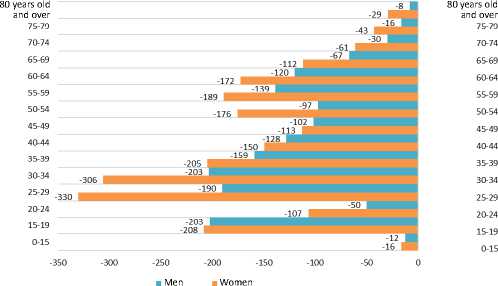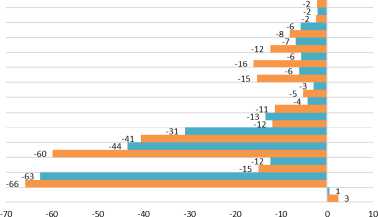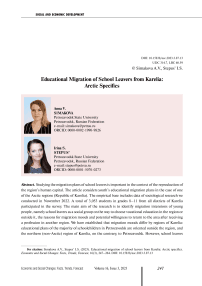Educational migration of school leavers from Karelia: arctic specifics
Автор: Simakova A.V., Stepus I.S.
Журнал: Economic and Social Changes: Facts, Trends, Forecast @volnc-esc-en
Рубрика: Social and economic development
Статья в выпуске: 3 т.16, 2023 года.
Бесплатный доступ
Studying the migration plans of school leavers is important in the context of the reproduction of the region’s human capital. The article considers youth’s educational migration plans in the case of one of the Arctic regions (Republic of Karelia). The empirical base includes data of sociological research we conducted in November 2022. A total of 3,053 students in grades 8-11 from all districts of Karelia participated in the survey. The main aim of the research is to identify migration intensions of young people, namely school leavers as a social group on the way to choose vocational education in the region or outside it, the reasons for migration moods and potential willingness to return to the area after receiving a profession in another region. We have established that migration moods differ by regions of Karelia: educational plans of the majority of schoolchildren in Petrozavodsk are oriented outside the region, and the northern (non-Arctic) region of Karelia, on the contrary, to Petrozavodsk. However, school leavers of Arctic and southern regions are also focused on studying outside the region, where the flows from the regions are usually directed to the center of their region and then to other regions. It is important to assess the potential return of graduates who leave the region: most of those who are not going to study in Karelia are also going to work there. A comparison of actual and potential outflows of eleventh-graders from the region proves that in fact every third graduate leaves. Most graduates, disposed to leave, romanticize their plans, and only one in four families financially prepare for their child’s education in another region; the rest take no concrete action. The results obtained contribute to studying youth’s migration activity in Russia’s regions that are partially included in the Arctic zone of the Russian Federation, as detailed information is limited for such territories. In practical terms, the research results can form the analytical basis for the timely development of management mechanisms to strengthen and retain youth in the Arctic regions.
Educational migration, migration plans, school leavers, arctic zone of the russian federation, republic of karelia
Короткий адрес: https://sciup.org/147241185
IDR: 147241185 | УДК: 314.7 | DOI: 10.15838/esc.2023.3.87.13
Текст научной статьи Educational migration of school leavers from Karelia: arctic specifics
Combined with a decline in natural increase, migration outflow is one of the main threats to the development and national security of the geostrategic macro-region – the Arctic zone of the Russian Federation (AZ RF)1. The migration balance has been stably negative for the previous ten years in the AZ RF. According to the 2021 data, the population inflow does not compensate the outflow, which contributes to the population decline in the Arctic territories. The migratory outflow also aggravates the current deficit of labor resources in the AZ RF for the current and prospective period, which imposes restrictions on the implementation of large-scale investment projects, under which it is planned to create 140 thousand new jobs by 2035 (Efimov et al., 2022).
The specifics of the Arctic territories, on the one hand, limiting their development (remoteness, harsh climate, limited infrastructure, low density and negative population growth, asymmetric socio-economic development), on the other hand, favorably distinguishing them from other Russian regions (strategic importance, investment and human resource potential, the presence of the Northern Sea Route (Shaparov et al., 2022), high human development index), necessitate an in-depth analysis of migration processes in these territories.
According to 2021 data, approximately every second person, arrived in the AZ RF, is a young person under the age of 35. There are fewer young people among those leaving the region – 38.6%, but the share of persons of retirement age leaving the AZ RF increased to 22.7% (the share of entering pensioners is 17%) (Khoteeva, Stepus, 2023). Migration movements are differentiated in the Arctic territories due to the different level of development of the territories, spatial location of the production, mining and infrastructure base that forms the foundation of the AZ RF economy (Heleniak, 1999). At the present stage, many factors causing migration movements in the AZ RF have been classified, among which generalized economic, social, demographic, ethnic, political-legal, natural-climatic, personal-psychological (Ukhanova et al., 2021), etc. The impact of these factors is differentiated by the subjects of the AZ RF and by individual territories. For example, for the regions of the European part of the Russian Arctic, the important ones are the age structure, the level of wages, as well as the combination of local conditions for the formation of migration sentiments, including the motivation of the population (Shelomentsev et al., 2018).
In the Arctic territories of the regions of the European part of the AZ RF on average for 10 years2, there is a negative increase in the interregional type of migration. The Arctic territories of the Arkhangelsk Oblast and the Republic of Karelia are more often abandoned by young people under the age of 35, with women being the most active. The migration outflow of the adult population, especially of those of retirement age, is typical of the Murmansk Oblast and the Arctic territories of the Komi Republic (Fig. 1).

* Data on age groups 0–15 and 15–19 are given with overlap due to the limited statistical information on gender and age structure of migration flows in the context of municipalities.
According to: indicators of the Database of Municipal Formations of Rosstat.
Figure 1. Average annual balance of interregional migration in the Arctic territories of the subjects of the European part of the AZ RF for 2012–2021, people*


At the same time, in the Murmansk Oblast, there is a migration increase in the population aged 20–24 years, especially among men, which may be associated with the return of young people to the region after training, at least fixed (Mkrtchyan, 2020), enrollment in higher education or employment.
Migration loss in the AZ RF is largely shaped by the youth’s movement, which is due to the availability and remoteness of vocational training organizations and potential jobs, as well as youth’s attitudes and plans to live and work in the Arctic territories (Uusiautti, Yeasmin, 2019).
Thus, the aim of the research is to identify the migration intentions of school leavers who are on their way to form an educational trajectory in the region or outside it, the reasons for their migration moods and their potential readiness to return back after receiving a profession. Scientific relevance is determined by the lack of knowledge about this phenomenon and the possibility of comparing youth’s moods with the actual regional outflow of graduates in the context of municipalities. It is doubly relevant to study this problem in the territories of the regions partially included in the AZ RF, since the social infrastructure of such territories is mainly concentrated in the non-arctic part (except for the Arkhangelsk Oblast), and the vector of population migration plans is often formed along the direction “district – administrative center – other region”, where large and capital cities are intermediate links of migration routes from the Arctic territories to federal and regional capital cities (Fauzer, Smirnov, 2020). This article aims to contribute to the study of these problems. The tasks of the research are to 1) identify the educational and professional plans of school leavers, 2) analyze the migration attitudes of school leavers regarding education in their native region, and 3) compare the volume of the planned (by students) and actual migration outflow of school leavers.


